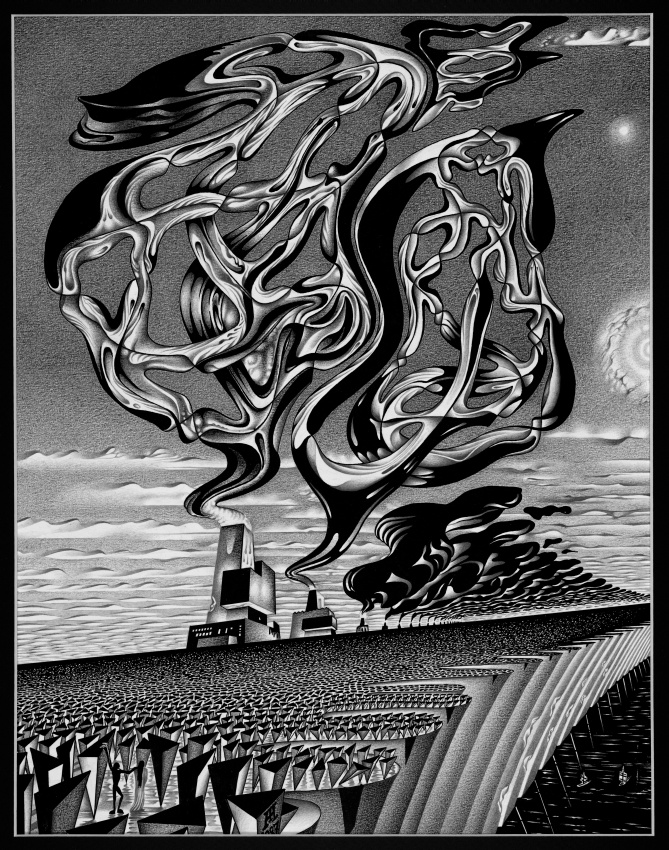Spines of two 3-dimensional compact closed hyperbolic manifolds of smallest complexity
No. 245, 1987
(Hamiltonian symplectic geometry, topology of 3-dimensional manifolds, hyperbolic geometry)
India ink and pencil on paper, 30 x 40 cm.
Great plumes of smoke belch relentlessly from the stacks of factories. Off into the horizon they reach, lining strange geometric fields, overshadowed by wispy clouds, ending in undulating cliffs that drop to an oily sea. Indeed, the intertwined plumes are themselves the chief mathematical objects of this picture. They represent two-dimensional neighborhoods of the one-dimensional skeletons in the spines of two three-dimensional manifolds. These two manifolds, quite remarkable in themselves, are the first examples of iso-energy surfaces on which an arbitrary Hamiltonian differential equation is not integrable in the class of smooth integrals. The complexity of the manifolds is equal to nine, which we can see by counting the number of vertices of multiplicity four in the two-dimensional spines shown.
